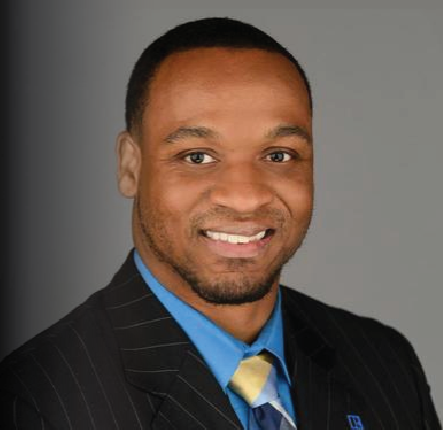You are viewing our site as a Broker, Switch Your View:
Agent | Broker Reset Filters to Default Back to ListOpening Doors to Real Estate Investing
December 12 2016
 Garland Harris Jr., REALTOR®
Garland Harris Jr., REALTOR®
Masters in Community Development, BA in Architecture from Prairie View A&M University
Garland Harris Jr. may be new to the REALTOR® family, but he is already primed to make his mark on the Houston area. By keeping his eyes open for opportunities, he has moved from watching developers as a service provider, to building an investment team and client base driven not only by profit, but also positive community impact. Our conversation with Garland should encourage anyone looking at real estate investing to become a sponge for knowledge and enact a plan for 2017.
When did you become a Realtor® and how did you start working with investors?
Garland: I joined the REALTOR® family in 2016, but started working with real estate investors in 2014. My first exposure came from working as a design architect for some local townhouse developers. After learning the development side, I gained interest in real estate investing, and became a REALTOR® to get access to data and build relationships with agents, affiliates and lenders.
How is working with investors different from working with a client who intends to occupy a property?
Garland: The main difference is what drives them to a buying decision. An investor is not focused on things like street appeal, but on how the numbers work and how the investment fits into their overall business goals. Understanding your investor's financial wants and goals is critical.
I get asked a lot about the lingo, formulas, etc. in order to become knowledgeable about real estate investing. What are some resources that you use and would recommend?
Garland: I started off using BiggerPockets to help with general terms and concepts, but then branched out and read books like the ones from Gary Keller. For people new to investing I would recommend attending every seminar you can dealing with the area of investing you want to deal in, and building your network through groups like local REALTORS® associations. Facebook groups are also a surprisingly great resource, my favorite group being the Small Developers/Builders.
What property types are your clients looking to invest in today?
Garland: Many of my clients are focused on areas that would benefit from redevelopment and employment boosts, which can lead to higher cap rates based on the risk they are assuming. We typically focus on multifamily product in need of renovation, but have also been known to analyze retail opportunities based on the needs of the community.
What are your personal real estate investment goals for the future?
Garland: I've put together an investment team that plans to build a handful of multifamily complexes ranging from 2-10 units by the end of 2017 in addition to building and selling single family townhouses in the $200s as a means to build quick capital. From there, we will venture into commercial real estate. We see multifamily as being a base for our future with commercial real estate providing the growth.
Walk me through your process when working with investors and using RPR.
Garland: For residential investments, I find a property on our MLS and then go into RPR to gather secondary data to support the reasons behind an investment. For residential investments, RPR has all the historical data, zoning maps, flood maps, historic property values—much of which is not available in the MLS or in any one source.
It's very similar for commercial investments. I'll find the property outside of RPR but go into the system to pull reports showing trade area data, best business reports based on competition for retail opportunities, and even look at POIs to see the competition surrounding a potential property. Once I have the data backing why to invest in a property, I go into Valuate® to run the numbers.
What has your experience been like using Valuate?
Garland: I consider myself to be good with technology and quick to understand software, so for me it was pretty easy to jump in and see the possibilities. It has been great to transition from Excel spreadsheets to Valuate, where things are more automated and all of my investment analyses are stored in one place.
What one function does Valuate® offer that your clients have found most useful?
Garland: If I had to pick one function, it would be the ability to run different scenarios and compare an investment's performance. For example, we were analyzing a residential flip and estimated that the renovation costs would be between $50,000 – $70,000. With Valuate, we generated three scenarios at various renovation costs and were able to see what the risk would be if those costs came out on the high side. From this analysis, we ultimately determined there was too much risk at that asking price and moved on.
If you could advise REALTORS® on how to leverage RPR when working with investors, what would you tell them?
Garland: It all starts with knowing your client's investment goals and the local area factors that might affect them reaching those goals. Any REALTOR® working with an investor should be pulling RPR reports and identifying key factors such as flood zones, population projections, home value trends, etc. and developing a deep understanding of the area his or her client is investing in. Then going into Valuate and running the numbers is the best way to project how that property will perform be it a flip or a long term hold.
Anything else?
Garland: Not having the money is not a reason to avoid getting into the investing world when REALTORS® have the knowledge, resources and connections to bring to the table.
To view the original article, visit the RPR blog.









